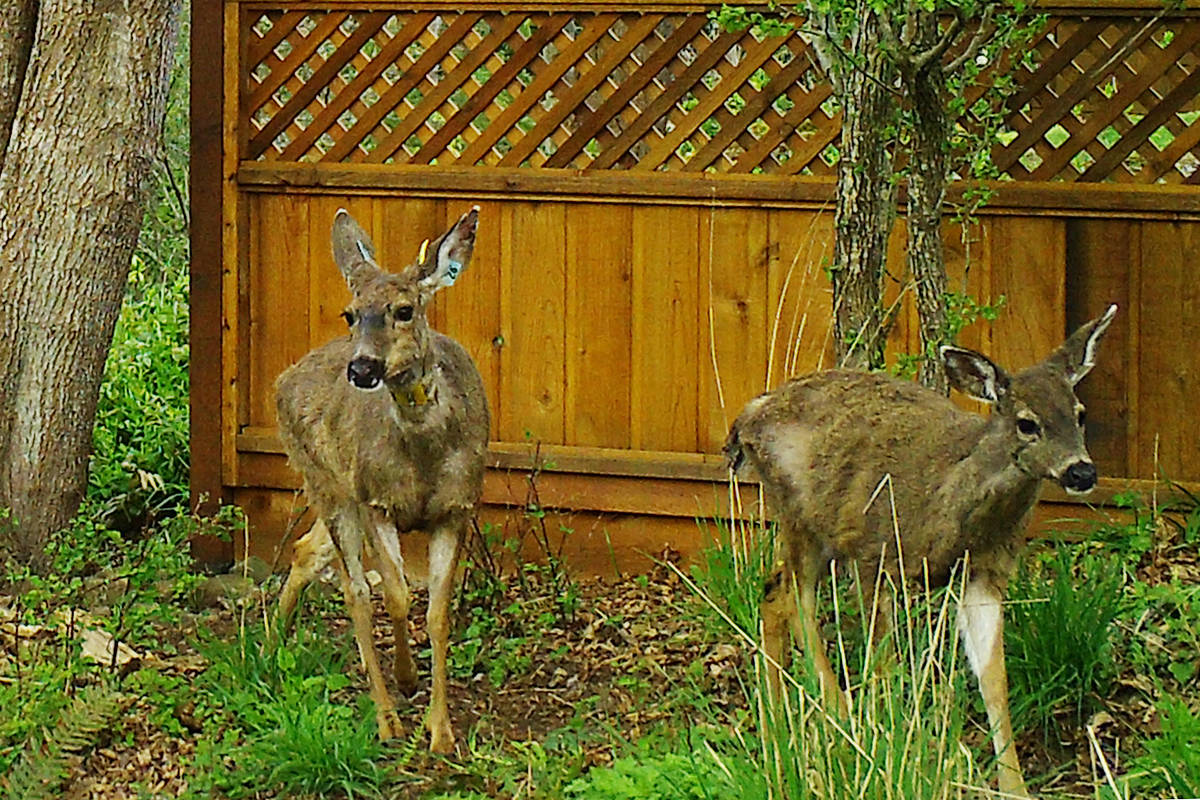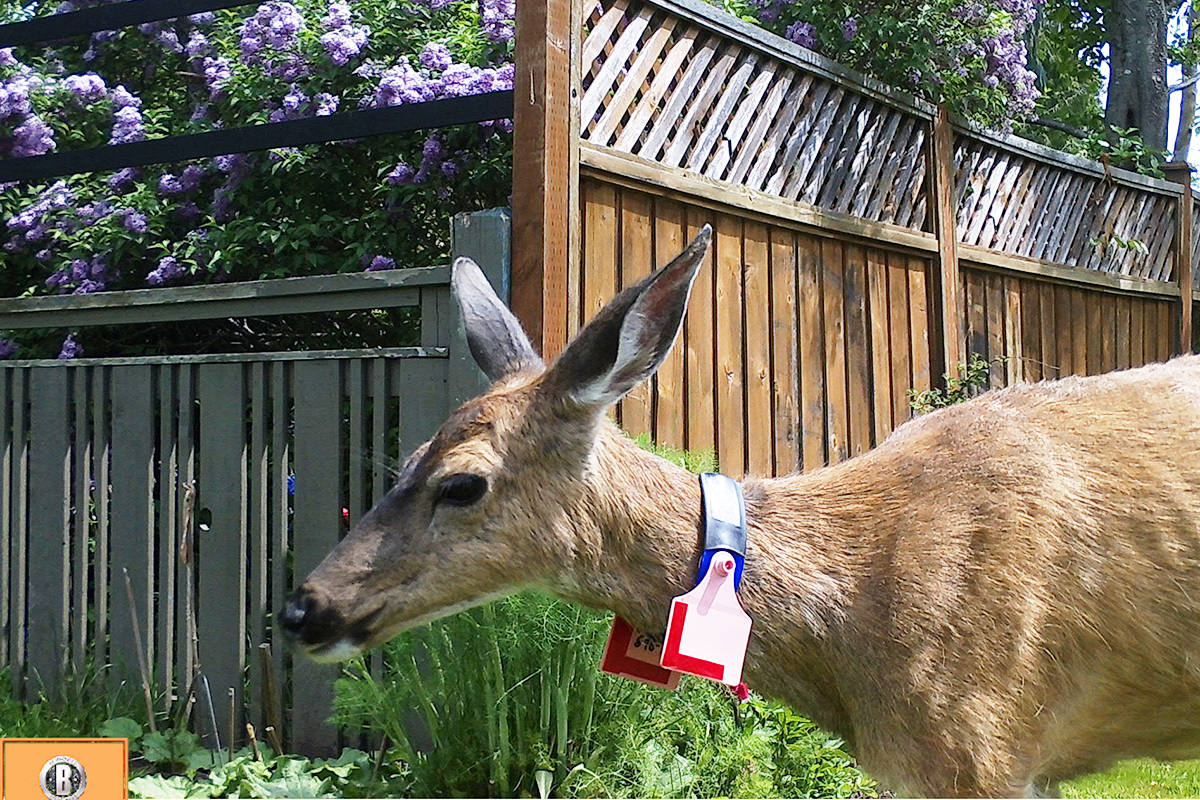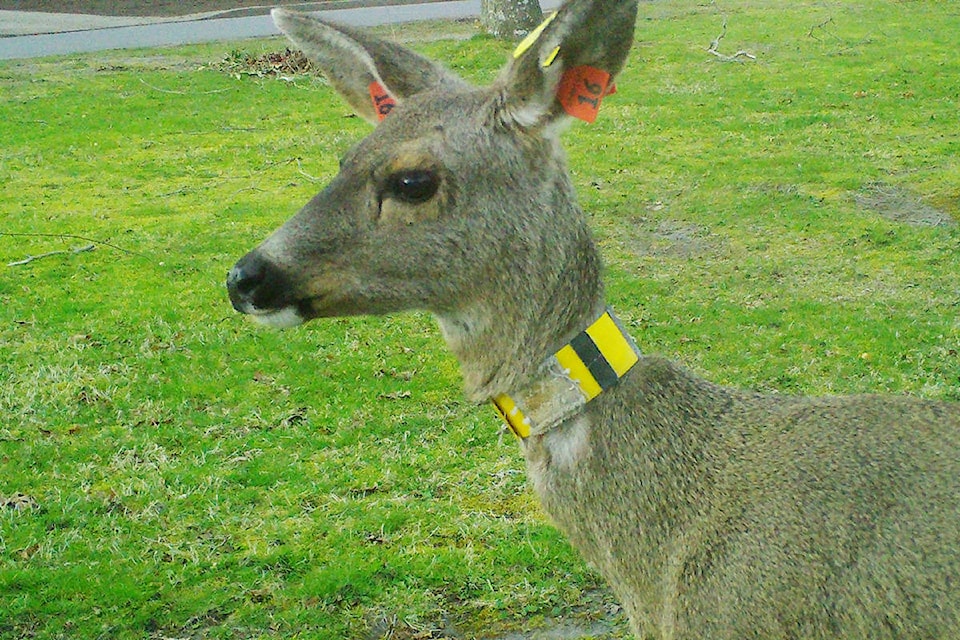Does that doe in your neighbourhood have a newborn fawn in tow? The colour of its “jewellery” might reveal why.
This past fall, the Urban Wildlife Stewardship Society completed the second phase of the Oak Bay Urban Deer study, using immuno-contraception to control the deer population.
Throughout the process, colour-coded tags and collars help researchers track which does belong to the control group, and which have been given the vaccine.
This spring, here’s what you’ll likely see:
- Eighteen does are sporting collars with two bright pink tags with reflective tape – this is the control group and will likely have a fawn or two trailing them.
- About 40 does have a colourful collar and ear tags – these have received the immuno-contraceptive, as have 20 more does without a collar, but with ear tags.
“Most of these colourfully adorned does should not have a fawn, but because the vaccine is estimated to be between 70 to 95 per cent effective, some will – a big piece of the research is determining the numbers of does that have fawns this year,” says Kristy Kilpatrick, with the UWSS.
If the vaccine is as effective as anticipated, it could be approved as effective management for other communities.
To help UWSS measure immuno-contraception’s success, anyone seeing a marked doe with fawns is asked to email photos to info@uwss.ca. Please also add any supplementary information on collar colour and ear tag colour/number if it’s not clear in the photograph.
Physical distancing is for deer, too!
Though fawn numbers are expected to be much lower, do still be on the lookout while driving, cycling or walking.
Remember that does often act in a protective manner if you’re near a fawn – even if you can’t see it. If a doe seems to follow you, try changing direction as you may be unknowingly walking toward a hidden fawn. And because dogs are perceived as a threat, keep them leashed and walking near you.
Reduce your chance of colliding with a deer by slowing down and scanning ahead, especially in areas deer are known to frequent and at dawn and dusk when deer are more active. Deer are also rarely alone – others may follow behind and dart into your path, where headlights can confuse and cause deer to freeze or act unpredictably.
If you find a fawn, leave it alone
BC SPCA’s WildArc fields numerous calls for “orphaned” fawns, but typically advise residents to leave them alone – the mother is likely nearby and will return once you leave.
Does shelter fawns from predators then leave for long periods to forage. Because fawns are born without scent, does may initially feed and sleep apart from the fawn to avoid attracting predators.
If the fawn appears cold, weak, thin, injured, is bleating repetitively, or if the mother has not returned to a seemingly healthy fawn for more than eight hours, call WildArc. Don’t remove the fawn on your own – if you’ve inadvertently handled the animal, rub an old towel on the grass, then gently wipe the fawn down to remove human scent.
For more tips about living with urban deer, visit uwss.ca.


